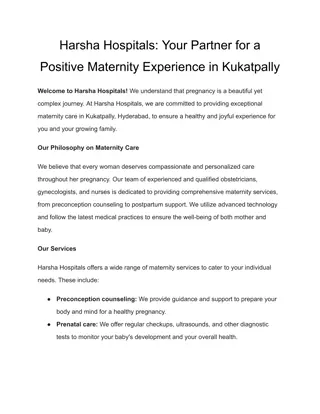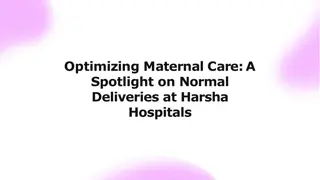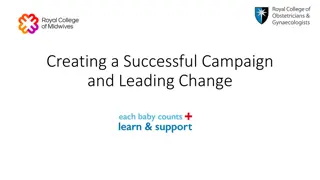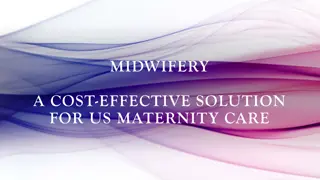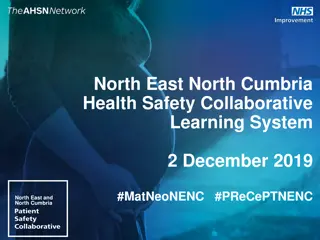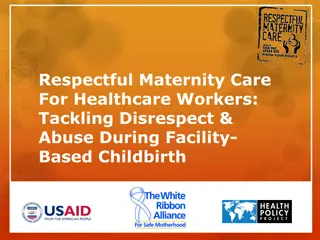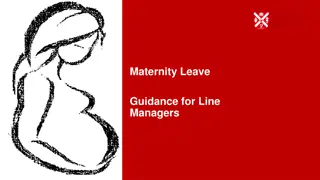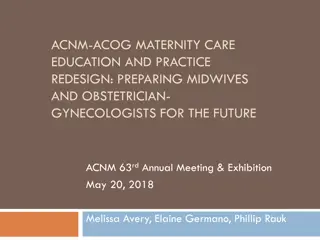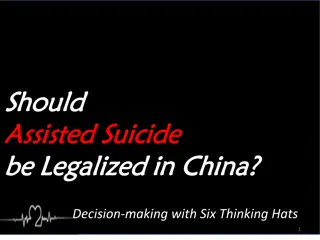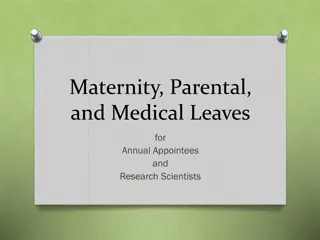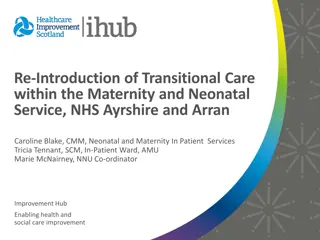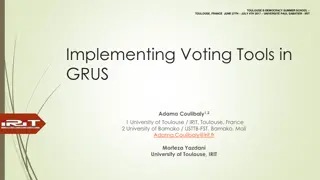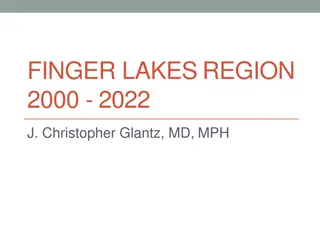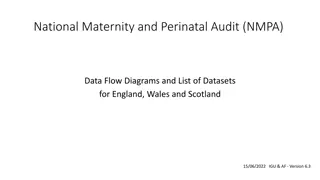Enhancing Maternity Care Decision-Making Tools
Develop a web application providing evidence-based information for prospective parents and midwives on place of birth choices. Incorporate national and local statistics, enabling informed decisions and discussions. Set up a steering group and work with women to ensure the tool meets their needs. Evaluate and spread the tool to local, regional, and national levels.
Download Presentation

Please find below an Image/Link to download the presentation.
The content on the website is provided AS IS for your information and personal use only. It may not be sold, licensed, or shared on other websites without obtaining consent from the author.If you encounter any issues during the download, it is possible that the publisher has removed the file from their server.
You are allowed to download the files provided on this website for personal or commercial use, subject to the condition that they are used lawfully. All files are the property of their respective owners.
The content on the website is provided AS IS for your information and personal use only. It may not be sold, licensed, or shared on other websites without obtaining consent from the author.
E N D
Presentation Transcript
Background Portsmouth Hospitals has a large maternity service with over 6000 births per annum There are 3 free standing midwifery led units (FMU), an alongside midwifery led unit (AMU), home birth service and a consultant led labour ward The Nurture programme implemented an integrated model to provide one to one midwifery care in labour BUT In 2011/12 only 10.9% of births were out of hospital
Giving birth is generally very safe in all environments Birth in MLUs offers considerable benefits for mothers High normal birth rate Lower intervention Less costly
Too many questions! How do we increase the number of women expressing their preference for place of birth? How do we give information to mothers about their choices? How do we help mothers and midwives understand the Birthplace research? How do we design something that is what women want and will use? How do we influence the people who influence the mothers? How do we encourage an informed shared decision for place of birth?
Health Foundation Shine Award 80K Objectives Develop a web application accessible on computers, smartphones or tablets Provide a decision tool for prospective parents and midwives by providing clear, evidence based, unbiased information Incorporate data to show national and local statistics Enable parents to consider their thoughts and feelings around place of birth Provide summaries of key information about their preferred place of birth as a prompt at the discussion at 36 weeks
Learning 1 Don't underestimate the scale of the project Set up a steering group Appointed a project manager Appointed a technical designer Worked with women to develop the tool Appointed Midwife leads Designed the audit tool Identified pilot cohort of women Trained the midwives Evaluation Enhanced the graphics Spread-local, regional, national, world!!! Marketing
Learning 2 Getting the right people involved Project lead-in a position of influence A dedicated project manager Women's participation lead Midwifery clinical experts, clinicians and consultant midwife A researcher A technical expert Finance Midwife training leads
Learning 3-have a clear structure Service Governance framework MY BIRTHPLACE STEERING GROUP System Specification Sub Group Comms sub Group Data Implementation and training Final Report Group collection and analysis
Developing the app. Learning 4-ask the end user early!! First design and ideas very basic Focus groups of women reshaped information and design-simple representation of data Linked to other information (eg original research, hospital tours) Graphics are important Involve IT early Understand the differences in the applications (eg web based, app available in an app store and specific to devices)
Pilot The 30 midwives received training in July 236 mothers (target 250) were given access to the app via a leaflet with a QR code after 20 weeks 167 women went on to have their babies in October or November 2013
Outcomes Data analysis Personal feedback from mothers-interviews Personal feedback from midwives-focus groups App survey
Preference for place of birth recorded at 12 and 36 weeks for women in the pilot group who gave birth in October or November 2013.
Personal Feedback I am incredibly excited about this app as I think there was a total lapse in women's knowledge in their choices of place of birth and this app will ensure that all women have the information to make an informed and educated choice of where they would like to have their baby. It s ground-breaking and I m so proud to have been a part of it. (Midwife)
Good Practice we would share with others include: Make sure you always work with the end user to develop the app Get key personnel in place early Project Manager, clinical leads etc Cost in the expert time that is required Give time to training of any staff that may be involved in the project Think about regular revisions and re-launch
What are we doing now? PhD studentship with Bournemouth University - evaluation Local roll out to all areas started June 2014 Funding for regional roll out awarded 2015 - all Trusts in Wessex Individual Trusts interested - process and contract developed Intention to develop more apps for shared decisions Marketing-conferences, papers (RCM), awards Sited as best practice in NICE guideline for intrapartum care
However........... The numbers of births in freestanding MLUs have still not increased The number of births off the labour ward is now 25% The normal birthrate is higher than the national average-Nov 2014-70%!!! A new project has started to fully implement a full shared decision making programme based on The Health Foundation MAGIC
Questions? Gill.walton@porthosp.nhs.uk http://mybirthplace.org/portsmouth/



